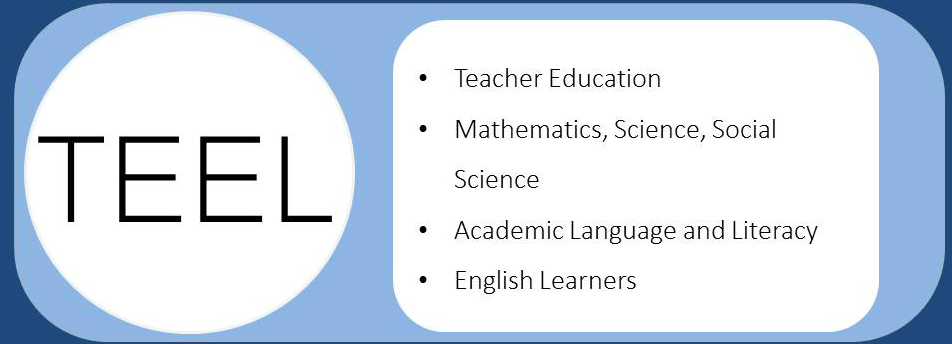English Language and Literacy Integration in Subject Areas (ELLISA) Project
Strategies for Integrating Language and Literacy in Science Instruction
|
Promote Academic Discourse
|
Support Science Literacy Development
|
|
Scaffold Language and Content
|
Contextualize Learning
|
ELLISA Instructional Practices in Science
1. Promoting Science Talk
Academic Discourse: Teacher uses and brings attention to spoken, written, or other kinds of legitimate claims about science concepts and reasoning, and justifying claims and assertions with supporting evidence. Teacher provides students with opportunities to engage in science discourse, which involves providing evidence, explaining, expressing judgment, and/or proposing methods of inquiry.
Instructional Conversation: Teacher initiates conversations that require students’ science reasoning and dialogue (questioning), and the teacher builds on and connects students’ responses to science activity (follow-up).
2. Literacy in Science
Authentic Science Literacy: Teacher provides students (a) authentic science literacy tasks to support science learning (e.g., measuring, weighing, timing, reading, etc.) and (b) literacy tools for learning (e.g., rulers, scales, timers, texts, etc.).
Science Vocabulary: Teacher appropriately uses science terms and phrases, and provides students with opportunities to use these words.
3. Language Scaffolding and Development
Language Scaffolding: Teacher attends to linguistic structures known to be problematic for English learners, including linguistic blind spots (e.g. figurative language, idioms, homonyms) when appropriate. Teacher is cognizant of language load involved in science, anticipates comprehension breakdowns when eliciting ELL responses (e.g. wait time, question type), and modifies speech accordingly (rephrasing, L1 use, explicitly announcing goals).
Scaffolding Science Content: To provide students with access to science content and comprehensible input, teacher uses SDAIE (Specially Designed Academic Instruction In English) strategies, including paralinguistic cues (e.g., pitch, rate of speech, etc.), multi-sensory experiences, and visual representations.
4. Contextualizing Science Activity
Contextualizing Personal-Home-Community-Experiences: Teacher elicits students’ knowledge and experiences from familiar personal-home-community understandings of science-related concepts, and uses them in classroom science lessons.
Contextualizing Physical Environment and the Ecology: Teacher elicits students’ knowledge and experiences from familiar local environmental understandings of science-related concepts, especially knowledge from direct experience with the physical environment and related simulations, and uses them in classroom science lessons.
